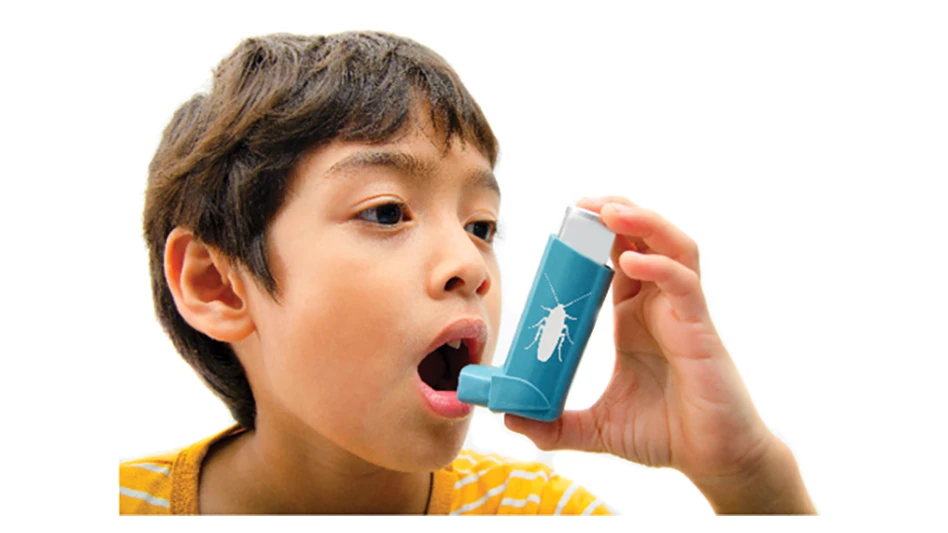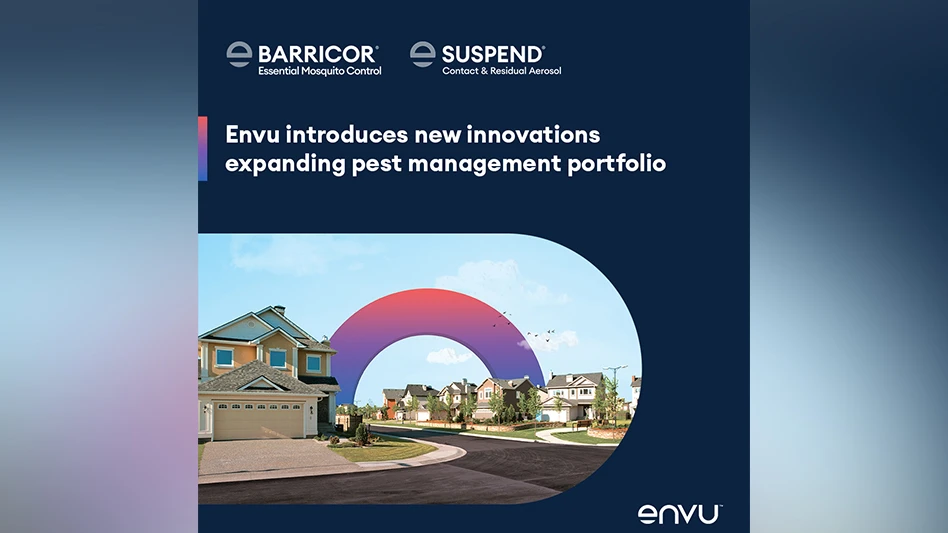
For the insect pests that PMPs most commonly deal with, the main categories of pheromones are sex pheromones, trailing pheromones and aggregation pheromones. For the sex pheromone, one sex (most often the female) puts out her perfume of pheromone, the male senses it and hones in on his new girlfriend. This is common in moths like Indian meal moths.
Trailing pheromones are used by insects like ants. They lay down a chemical trail that other ants can easily follow to a good food source and then straight back to the nest.
Aggregation pheromones are emitted by both sexes, particularly in some stored product beetles. This is a pheromone that says, “Hey, there’s a bunch of us over here and (likely) a good food source, come join us!” Sex pheromones are typically much stronger and put off by short-lived insects while aggregation pheromones are weaker and produced by longer-lived insects. Trailing pheromones vary by species.
Pheromones are important because if we can use them to our advantage, we can disrupt some aspect of the pest. It’s basically using their own biology against them. We can use them in traps to capture and monitor pests, and we can use them to control insects when we disrupt their mating.
TRAPS. If we use the aggregation or sex pheromones on traps and monitors, we can pull in more insects. Having a pitfall or glueboard is merely a blunder trap: you are waiting for an insect to “blunder” into it as they are wandering around. You can improve the chance of catching something in a blunder trap if you put it in their potential path. Adding an aggregation or sex pheromone to that trap now greatly increases the chance of actively pulling in a nearby insect, instead of passively hoping it will encounter the trap. However, many factors can affect how well a trap can work.
- Sanitation — Think of this situation: You have a plate of doughnuts in front of you and someone two rooms over starts making cookies. Are you going to abandon those doughnuts to go get the cookies? Likely not. If insects have a good thing going in one spot, the pull of the pheromone in the trap may not be strong enough to pull them away from where they are. Good sanitation increases the attractiveness of the traps.
- Placement — Consider the previous example, but now put those cookies on a high shelf that you would have to get a step stool out to actually get to them. Makes it even less appealing than sitting there eating those doughnuts, right? Same thing with a pheromone trap. They still need to be placed near to where the pest may be and they need to be accessible. Putting a dome trap intended for crawling beetles doesn’t do much good when you put it on the top shelf — it will do a lot better on the ground. Placing a sticky trap for flying insects a foot off the ground will be out of their main flight path and not likely to be effective.
- Exclusion — Keep in mind the doughnuts and cookies, but now add two locked doors between them. Even if they are the best chocolate chip cookies in the world, they just aren’t worth the effort when you have doughnuts right in front of you. However, this can work in your favor. If there are “locked doors” (good exclusion) between the traps, you can more easily identify the areas they came from. If there is a solid barrier between a storeroom and a bakery floor, you know traps in the storeroom are monitoring just that storeroom. You don’t have to inspect other areas, unless other traps show captures!
The key with these pheromone monitors is to actually use the data that is collected. Knowing how many flour beetles in a trap is fine. Knowing that the population numbers are increasing or decreasing, and knowing what particular areas the pests are in, are all pieces of information that can lead a pest management professional to apply targeted and more effective treatments.
DISRUPTION. For insects with a short adult life span, finding a mate quickly is important. That’s why sex pheromones tend to be stronger than aggregation pheromones. Some of these have been replicated and are used as control methods. The Indian meal moth and other stored product moths can be controlled using this technology. Imagine this: You walk into a room and someone has perfume or cologne on. You can pretty easily find that one person. Now imagine someone liberally sprayed that scent all over the room. Can you still easily find that one person who was wearing it? Putting a dome trap on a top shelf doesn’t do much good since it is intended for crawling beetles — it will do a lot better on the ground. A confused male can’t find a female to mate with. No mating means no eggs and no next generation of hungry little larvae.
The downside to this is it won’t control the feeding larval stages. As soon as they become adults though, the mating disruption will hit and they will be controlled. Pheromone monitors are still important to ensure the treatment is working properly and identify when new infestations may be brought in with raw products.

FINAL THOUGHTS. Scientists continue to work on new ways to use pheromones to specifically target species of insects. Pheromones have long been used for agriculture and forestry pests.
Researchers are looking at the pheromones for ants, stored product insects, termites and other urban and structural pests to devise new ways of managing them and new products to help control them. The currently available pheromone products can help you and your team monitor for and control a number of pests, as long as they are used correctly. Keep in mind the insect’s biology (are they a crawler or a flier?), their food preferences (place traps near those), and the conditions at the site for the most effective use of pheromones.
Smell you later!
Get curated news on YOUR industry.
Enter your email to receive our newsletters.
Explore the February 2021 Issue
Check out more from this issue and find your next story to read.
Latest from Pest Control Technology
- How to Get Rid of Odorous House Ants
- Massey Services Promotes Herndon to Director of Sales for Multi-Family Division
- NPMA Announces First Recipients of NPMA PRO Certified Credential
- Pestmaster of the Hudson Valley Acquires Catskill Animal Damage Control
- Photo Slideshow: Ant Identification Tips
- Video: Top 10 PCT Photo Contest Finalists
- UF/IFAS Study Reveals Boats as Perfect Vessels for Global Termite Spread
- Pest Control Consultants (Iowa) Earns Pinnacle Performance Award







